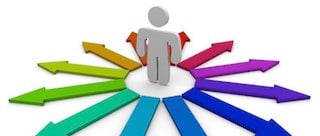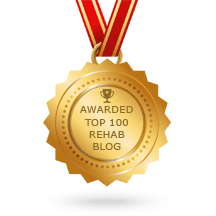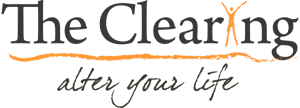 If you’ve begun researching the different types of residential addiction treatment programs only to find yourself confused and overwhelmed, you’re not alone.
If you’ve begun researching the different types of residential addiction treatment programs only to find yourself confused and overwhelmed, you’re not alone.
The number of different addiction treatment modalities has increased dramatically in the last few decades. As such, it can be difficult to discern the differences and distinguish the programs that are worth your time and money.
But knowing what to look for can make all the difference. In this post, we’ll outline the various types of treatment available and offer a framework for helping you decide which is right for you.
Treatment Modality Definition
Treatment modalities, also known as treatment methods or approaches, are the methods a doctor or health professional uses to treat a patient for a particular condition. A treatment modality could be a medication, therapy technique, behavior modification, or another form of treatment.
Treatment Modalities
What are the different treatment modalities one can pursue to treat addiction?
At the highest level, addiction treatment modalities can be grouped into two categories: 12 Steps or 12 Step Alternative. Within the Non-12 Step Category are myriad subcategories and treatment methods.
The Handbook of Alcoholism Treatment Approaches by Reid Hester and William Miller lists 48 different types of addiction treatment modalities, along with their degree of effectiveness within the context of clinical trials.
The extensive list ranges from basic behavioral changes such as exercise and relaxation training to prescription drug treatments like lithium and antidepressants. It includes alternative medicine therapies such as acupuncture and hypnosis as well as time-honored therapeutic techniques like cognitive therapy.
Treatment modalities can be grouped into the following broad categories:
1. Aversion Therapy
What it is: Aversion therapy attempts to create unpleasant associations to one’s drug of choice by inducing sickness, electric shocks or other undesirable experiences.
Pros and Cons: This process can work when the addiction is purely physical in nature, but only provide a short term benefit when there are underlying emotional issues related to the addiction. Often an individual will switch addictions when the root cause is not addressed.
Examples:
- Shick Shadel
2. Holistic Treatment
What it is: Holistic treatment promotes recovery by addressing multiple levels of self: body, mind, emotion, and spirit.
Pros and cons: We are learning more and more about the interconnection of mind and body. Addiction is usually the result of underlying emotional and spiritual issues that have led to depression, anxiety, anger, and other issues.
The technical term for this relationship is dual diagnosis. Holistic approaches get to the underlying causes and heal all the related dimensions simultaneously.
Examples:
- The Clearing
- Sierra Tuscon (to a degree)
3. Behavior Modification
What it is: Behavioral Modification and Behavioral Therapy (BT) is the process of replacing unhealthy habits with healthier ones.
Pros and cons: Over time we form strong neural pathways associated with addictive behavior that take time to unwind. BT recognizes this and takes a structured approach to developing healthier new habits. However, it doesn’t address underlying issues, and thus is more effective when used in conjunction with other therapeutic approaches in holistic frameworks.
4. Medication Only
What it is: Medical approaches use drugs to mitigate withdrawal symptoms and promote abstinence.
Pros and cons: Medication can be especially helpful for individuals who need physical support to detox, but it doesn’t help with the emotional issues that drive addictive behaviors.
Examples:
- Coleman Institute
- Waismann Method
- The Haven
5. 12-Steps Related Treatment
What it is: 12 Step-based recovery is based on the 12 Steps of Alcoholics Anonymous which was developed in the 1930s. The 12 Steps have been adapted over the years for other drugs of choice and addictions.
Pros and cons: 12 Step programs represent the most prevalent form of addiction treatment in the United States and offers a large, accessible network of meetings and free support. However, the program has not been significantly changed or updated to leverage significant advancements in psychology and neuroscience related to addiction treatment.
While 12 Step programs have helped many due to their pervasiveness and spiritual emphasis, overall success rates are relatively low - less than 5%, according to some studies.
Examples:
- Hazelden / Betty Ford
- Promises Malibu
- Sierra Tuscon
6. Education Only
What it is: Education-only approaches involve learning about addiction through books, movies, and other resources.
Pros and cons: Education initiatives are popular with schools and governmental associations, but when implemented without other supports their success is very limited.
Substance Abuse Treatment Modalities
In the Health Technology Case Study The Effectiveness and Costs of Alcoholism Treatment, authors Dr. Saxe, Dougherty, Esty, and Dr. Fine offer a helpful rubric for categorizing addiction treatment approaches:
- Medical
- medication-assisted detox programs and mood-altering drugs
- Psychological
- behavioral techniques from aversion therapy to family therapy
- Sociocultural
- inpatient programs, as well as 12 Step Groups
The authors note that most treatment programs combine aspects of all three, since individuals need different types of interventions to navigate the various stages of recovery.
Likewise, substance abuse treatment programs from professionally-led clinics to laymen-led groups can all employ various modalities, and participants’ involvement can range from superficial to intensive.
Here are some characteristics and examples of the most popular substance abuse treatment modalities categorized by type:
|
Primarily Medical |
Primarily Psychological |
Primarily Sociocultural |
|
Mood-altering drugs |
Family therapy |
Some inpatient programs |
|
Antidepressants such as Prozac |
Behavioral techniques such as blood alcohol level discrimination training |
12 Step Programs such as Alcoholics Anonymous (AA) |
|
Sensitizing agents which induce nausea if alcohol is consumed (such as Antabuse) |
Relaxation techniques and biofeedback |
Programs such as Al-Anon or Alateen (for family members of alcoholics) |
|
Opiate antagonists (such as Naltrexone) |
Visualization, guided imagery, hypnosis |
Some group therapies and educational programs |
|
Antianxiety medications / tranquilizers |
Assertiveness training |
Alternate Rebellion (one component of Dialectal Behavioral Therapy) |
|
Acupuncture |
Psychotherapy and group therapy |
Peer-oriented process therapy |
|
Exercise |
Lectures, education |
Church-based groups and recovery programs |
|
Electroshock therapy |
Motivation Enhancement Therapy |
Community reinforcement |
|
GABA agonist (Acamprosate) |
Brief Interventions |
Brief Interventions (some) |
The specific treatment modality necessary varies from person to person.
For example, individuals with a severe chemical dependence and no corresponding mental health issue simply require medication-assisted detox.
Others who struggle with a dual diagnosis - that is, a mental health condition such as anxiety and depression along with substance abuse - benefit from focused, structured therapeutic work in addition to any necessary detox.
As Dr. Saxe and his colleagues conclude, “The important point is that, in practice, no single treatment is considered sufficient for the treatment of alcoholism.”
Nothing Works if You Aren't Serious About Recovery
A popular mantra of the 12 Steps Approach is, “half-measures availed us nothing.” The collective belief both within and outside the 12 Steps approach is that until a person is willing to “give themselves entirely...”, recovery and sobriety will elude them. But even more important than effort is choosing the treatment approach that is right for you.
Part of the decision about how to treat addiction involves immersiveness of the program. Most of the treatment modalities outlined above can be conveyed through a variety of methods, such as whether the program is inpatient or outpatient, short-term or long-term, peer-based or professional, or group-based vs individual.
For example, a variety of the treatment modalities listed above are the foundation for both inpatient/residential and outpatient programs. Inpatient addiction treatment is inherently more immersive than outpatient, because it completely removes the individual from their normal environment.
This can be important especially when there are stresses, triggers, and distractions present (which is almost always the case).
Peer-Based vs. Professional-Based Addiction Treatment
Another important distinction is peer-based vs professional. Peer-based treatment programs offer a great benefit of connection with others who share a common struggle. But laymen mentors, while equipped in certain ways, are not trained to deal with individual emotional issues that require deep healing work.
It’s important to think through your specific situation to determine the level of intensity and professional support that is best for you.
Addiction Recovery Resources
To learn more about holistic healing approach, read our free eBook: Healing Underlying Core Issues:
Free eBook Download:
Healing Underlying Core Issues



